What Does Tobiko Taste Like? Dive into the Ocean’s Tiny Gems
Tobiko, the vibrant orange fish roe beloved in Japanese cuisine, sparks curiosity among food enthusiasts worldwide.
Tiny, delicate eggs burst with a unique sensory experience that goes beyond mere visual appeal.
Sushi lovers and culinary adventurers often wonder about the distinctive flavor profile of these delightful fish eggs.
Each tiny morsel carries a complex interplay of textures and sensations that tantalize the palate.
Professional chefs appreciate tobiko not just for its aesthetic qualities but also for its remarkable gustatory characteristics.
Seafood enthusiasts recognize these small eggs as a gourmet ingredient that elevates dishes with its distinctive maritime essence.
The sensory journey of tobiko promises to intrigue your taste buds and challenge your culinary expectations.
Dive into this flavorful exploration and uncover the delectable secrets of tobiko's remarkable taste.
What Exactly Is Tobiko?
Tobiko is the name for the tiny eggs of the Japanese flying fish. Each little egg is about the size of a pinhead, with a shiny look almost like pearls. Most tobiko is yellow-orange, but the color can change depending on what it’s mixed with.
For example:
Tobiko is a special treat in Japanese cooking and is often used in sushi and sashimi. It adds a pop of color, a crunchy texture, and a unique flavor that many sushi lovers enjoy. You can also try tobiko in other creative dishes!
Tobiko’s Flavor in Simple Words
Tobiko has a one-of-a-kind flavor that’s a mix of smoky, salty, and sweet, with just a hint of citrus, almost like orange peel. The taste is gentle, so it works well with other salty foods and doesn’t overpower them.
This sets tobiko apart from other fish roe like caviar or masago. What really makes tobiko special is its texture.
The tiny eggs are crisp and pop in your mouth, giving a light crunch and releasing lots of flavor. Tobiko can also be colored in different ways, making dishes look extra fun and inviting.
The mix of savory taste and playful texture is why tobiko is so popular in sushi. If you love sushi, trying tobiko is a must!
How Tobiko Can Help Your Health
Tobiko isn’t just delicious, it’s also full of nutrients that are good for your body. These little fish eggs are packed with protein, healthy fats, and lots of important vitamins, including C, E, B2, A, and D.
Tobiko is a good source of fat, and the healthy fats it contains can help lower inflammation and support your liver and heart. The vitamins in tobiko, especially A and D, are great for your eyes and skin.
There’s also astaxanthin, a powerful antioxidant that can help keep your skin healthy and reduce wrinkles. Tobiko has something called phospholipids, which may help your brain work better.
But keep in mind that tobiko also contains a fair amount of cholesterol, so it’s best enjoyed as a treat now and then, not every day.
Tobiko Comes in Many Colors
Tobiko comes in many colors, like black, gold, red, white, and even green. No matter the color, all types have a salty and creamy flavor.
You’ll also notice that tobiko eggs can be different sizes, from tiny grains to larger, pearl-like shapes.
Red Tobiko
Red tobiko stands out as a favorite among sushi lovers. Its bold red color creates a sharp contrast against lighter ingredients like whitefish or shrimp.
People often sprinkle this fish egg topping on various dishes. Avocado rolls, nigiri sushi, and salads look more appealing with its bright splash.
Red tobiko gains its color from a mix of fish eggs, salt, and typically some beet juice.
Orange Tobiko
Orange tobiko works well when making Japanese omelets called tamagoyaki. Chefs also like using orange tobiko as a tasty topping for different dishes such as:
Orange tobiko replaces red tobiko and adds a warm orange shade to rolls.
Typically, orange tobiko gets its color from mixing yuzu and tobiko.
Black Tobiko
Black tobiko mimics caviar in appearance and taste. Its dark, solid color results from curing with multiple ingredients like squid ink coloring.
Black tobiko shares similarities with other types but offers a deeper umami profile and hints of octopus from the squid ink. Subtle nutty and bitter notes complete its unique flavor experience.
Green Tobiko
Green tobiko, or wasabi tobiko, brings a zesty kick to seafood dishes. Small fish eggs mix with wasabi for a spicy punch that heat-loving eaters will enjoy.
People who like strong flavors will appreciate this special fish egg treat.
Golden Tobiko
Golden tobiko marks a top-quality fish egg choice. Salt brings out its gentle flavor compared to mass-produced versions.
Natural golden tobiko appears without artificial colors. Sometimes producers might add food coloring to enhance its visual appeal in special cases.
Serving Ideas for Tobiko
Tobiko’s salty taste and crunchy texture make it a fun ingredient for many Japanese recipes. You can use it straight from the freezer, after thawing, or even cooked in sauces.
Tobiko brings a burst of flavor and bright color to your dishes. Try adding it to sushi, rice bowls, or even as a topping for salads and appetizers:
Sushi
Tobiko pairs perfectly with sushi. You can blend it with different sushi ingredients based on what sounds good to you.
Gunkanmaki
Sushi lovers know gunkanmaki as a special bite-sized treat. Rice forms an oval base wrapped carefully with dark seaweed strips.
Tiny fish eggs might dot the top for extra flavor and color. Chefs sometimes slip crisp cucumber inside the seaweed to make the small roll more interesting.
Nigiri
Sushi lovers enjoy tobiko nigiri, a small rice creation from Japan. Chefs carefully craft these bite-sized morsels with vinegar-soaked rice topped with tobiko fish eggs.
Typically, Japanese cooks mix orange tobiko with spicy wasabi to give diners a zesty flavor kick. Restaurant servers often accompany this delicate sushi with classic sides like soy sauce and tangy pickled ginger.
Sushi Rolls
Tobiko adds a special touch to sushi, especially California rolls. Small orange fish eggs sprinkle across sushi rice, creating a crunchy and eye-catching look. Chefs carefully spread these tiny eggs over rice to make dishes look more interesting.
California rolls become extra special when tobiko joins the mix.
For Garnishing
Masago adds a pop of color and flavor to seafood dishes. Small orange fish eggs work well with many meal types and bring extra taste to plates.
Appetizers
Tobiko brings a delightful start to your meal. You can serve this tasty fish egg topping on:
Each choice makes for a wonderful small bite that will impress guests.
Sauces And Dressings
Flying fish roe adds a special crunch and salt kick to soups, sauces, and dressings. These small eggs keep their shape well in liquid foods without getting mushy or losing their texture.
Buying and Keeping Tobiko Fresh
Tobiko is a special treat that many people love, but choosing and keeping it fresh can be a little tricky. Here are some simple tips to help you pick good tobiko and store it properly, so you can enjoy its best flavor every time:
Where To Get Good Fish Roe
Tobiko brings exciting flavor to sushi dishes. People can find this special fish egg ingredient in Asian grocery stores.
Online shopping offers lots of tobiko options with different tastes like classic Japanese, spicy, and sweet styles.
Specialty sushi restaurants also serve fresh tobiko for hungry customers.
Smart shoppers always check expiration dates to make sure they purchase top-quality fish eggs for their meals.
Making Fish Roe Last Longer
Fish roes need cold storage, below 37F (3C). Sealed tobiko cans stay good for 6 months in freezers.
After thawing, use tobiko within two or three days. Unopened refrigerated tobiko lasts 4 to 6 weeks.
Once opened, eat tobiko quickly. Fish eggs are fatty and spoil fast.
Store in sealed containers for best results.
Warm water helps clean tobiko and removes extra grease.
Cold water might wash away good taste, so stick with warm water when rinsing.
Tobiko vs. Caviar vs. Masago
Tobiko isn’t the only tasty fish egg out there. There are also caviar and masago, two other delicious types you might enjoy.
Let’s take a quick look at how tobiko compares to these popular delicacies:
Caviar
Caviar comes from salted fish eggs of sturgeons like beluga, kaluga, and sevruga. These tiny eggs shine like little pearls.
Tobiko eggs are even smaller, measuring less than 1 millimeter across.
Colors of caviar range from brown to amber and deep black, which looks different from tobiko's bright colors.
Caviar offers a rich nutty taste with subtle sweet and salty hints. Some people say tobiko tastes similar to caviar.
Yet tobiko carries a smoky flavor unique to itself.
Caviar sits at the top of gourmet ingredients.
Most people connect caviar with high-end meals. Real caviar costs a lot because of its scarcity and fishing challenges.
Tobiko provides a more wallet-friendly alternative.
Uses for caviar remain quite narrow.
Chefs serve caviar by itself or as a light garnish. Such limits make sense since sturgeon eggs are so special and deserve pure attention.
Masago
Masago comes from capelin fish, part of the smelt group. Its natural color looks less bright than tobiko, with a more muted orange-red shade.
Small fish eggs feel sandy and less crisp when you eat them.
Some producers add color to make masago look like tobiko, even though these eggs are much tinier.
Masago has a salty flavor similar to tobiko, but with a slightly bitter edge.
Chefs often use masago as a cheap topping for dishes.
Restaurants like adding it to sushi rolls and rice plates because it costs less than caviar or tobiko.
Want to learn about this little fish egg?
Keep reading to find out more!
Top Recipe Picks Using Tobiko
Tobiko is a fun and tasty ingredient everyone should try at least once. It’s simple to use and works well in all sorts of recipes.
Try making a few tobiko dishes, you might just surprise your friends and family with something special at your next gathering!
Spicy Kani Salad
Crab salad brings joy with its simple mix of ingredients. Cool cucumber meets soft imitation crab in a creamy sauce.
Mayonnaise blends with spicy sriracha and a hint of mirin or rice vinegar.
Mixing these pieces creates magic on your plate.
Each bite promises rich flavors that leave you wanting more. Salt and tang dance together in perfect harmony.
Salad lovers will go crazy for this Kani treat. Quickly pull out your ingredients and start chopping.
Kitchen adventures await with this super easy recipe.
Inari Tobiko Sushi Roll
Tofu pockets turn into a quick meal ready in half an hour. Small rice-filled bites come topped with tasty tobiko mayo.
Chopped green onions add nice color and fresh flavor. People enjoy these little treats for dinner, midday meals, or starter snacks.
Bacon Kimchi Fried Rice With Roe
Fish roe brings a crisp crunch and subtle sweetness to this dish. Soft-boiled onsen eggs boost the flavor of the fried rice.
Kimchi fried rice tastes amazing no matter what ingredients you mix in.
Tobiko Taste and Helpful FAQs
1. Is tobiko a healthy choice?
Tobiko has protein and healthy fats, but it’s also high in cholesterol. Like most toppings, it’s best enjoyed in small amounts.
2. How is tobiko usually served?
You’ll most often see tobiko on top of sushi rolls, mixed into sauces, or sprinkled on rice dishes to add a pop of color and crunch.
3. Can everyone eat tobiko?
People with seafood allergies or high cholesterol should avoid tobiko. If you’re unsure about allergies or dietary limits, ask your doctor first.
4. Is tobiko safe during pregnancy?
If you’re pregnant, only eat tobiko that’s been cooked or pasteurized. Skip raw tobiko to be safe.
5. Does tobiko need to be cooked?
Most tobiko sold for sushi is ready to eat and doesn’t need cooking. If you prefer, you can add it to hot dishes right before serving.
6. How should I store leftover tobiko?
Keep tobiko in the fridge in a sealed container. Try to use it within a few days for the best texture and flavor.
7. Are there other fish roe like tobiko?
Yes! Masago and ikura are also popular. Each one has a unique texture, color, and use in Japanese cooking.
8. Can I eat tobiko every day?
It’s better to enjoy tobiko now and then, not daily, because of its cholesterol content.
Do You Like Tobiko Too?
If you’re curious about tobiko, now is a great time to give it a taste! This colorful ingredient adds exciting flavor and extra nutrients to any meal.
You don’t have to be a big fan of Japanese food to enjoy tobiko, it’s a unique food experience anyone can try. Was it what you expected?
I’d love to hear your thoughts in the comments below! If you found this guide helpful, please share and like it so others can learn more about tobiko too.
Your support helps others discover new foods!

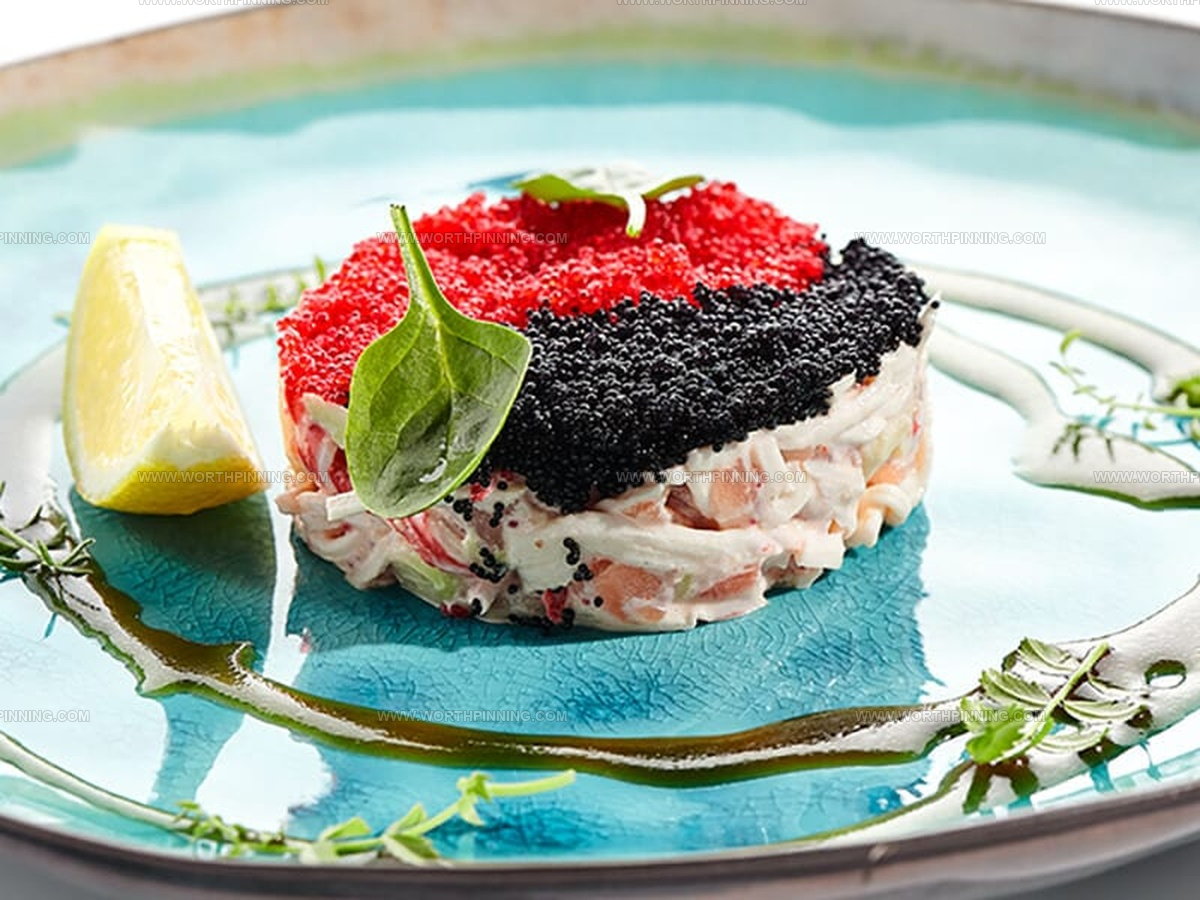
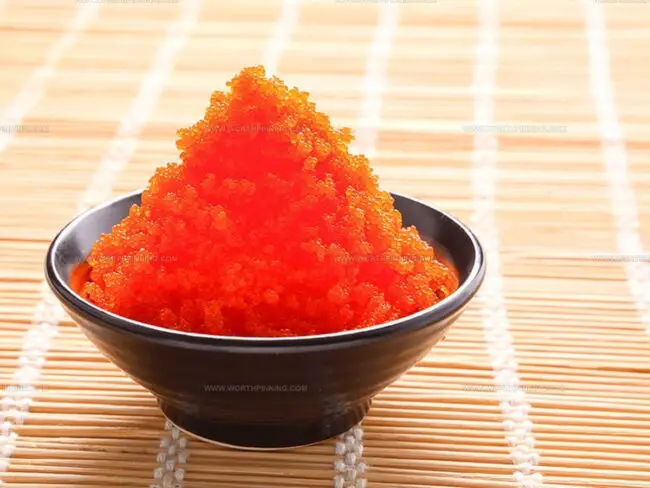

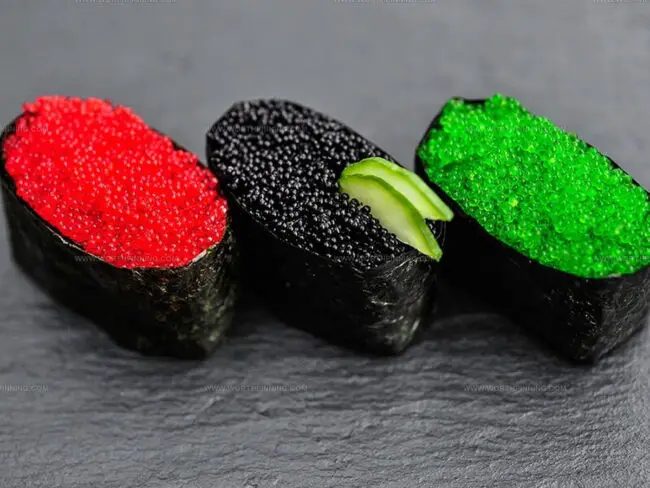
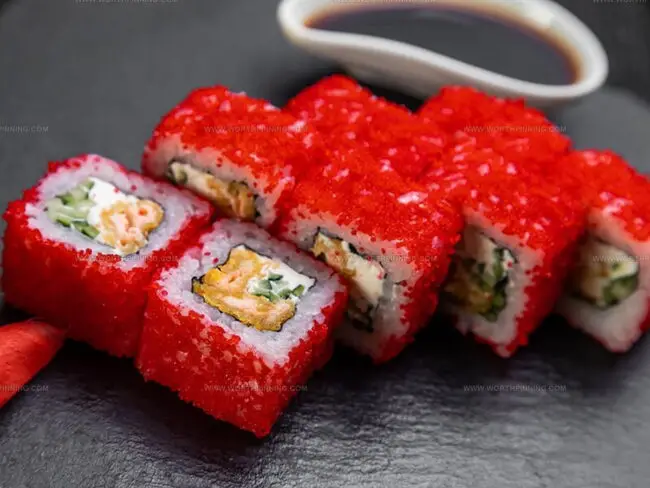
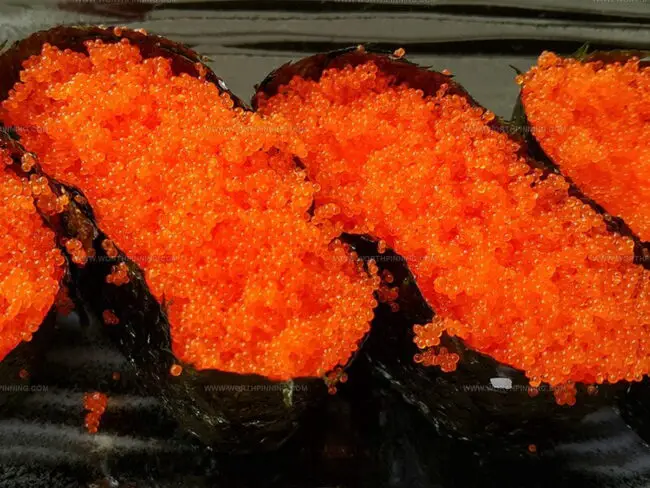
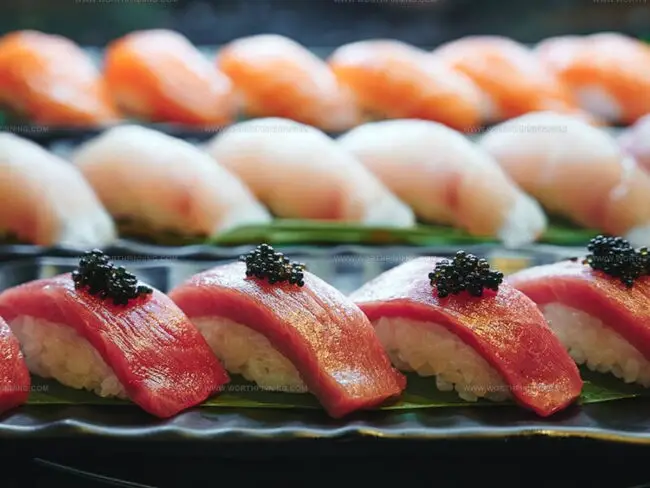
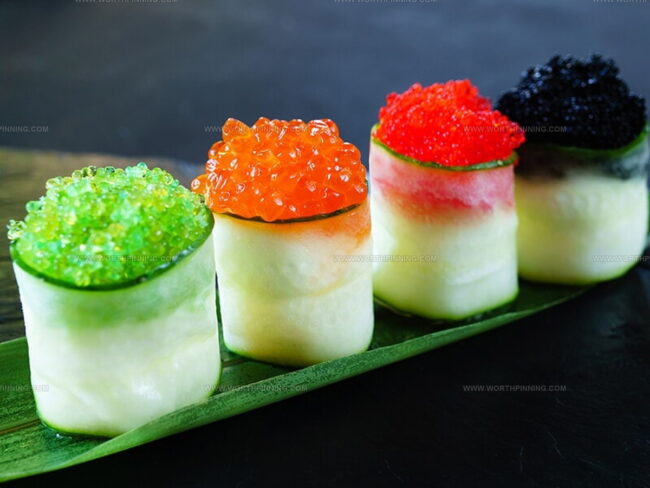
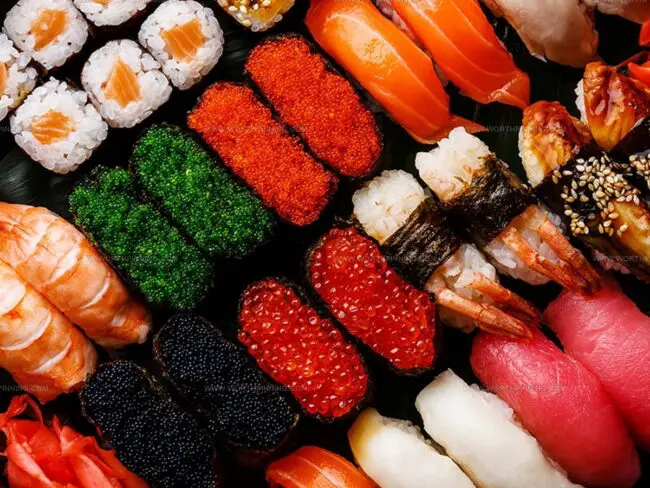
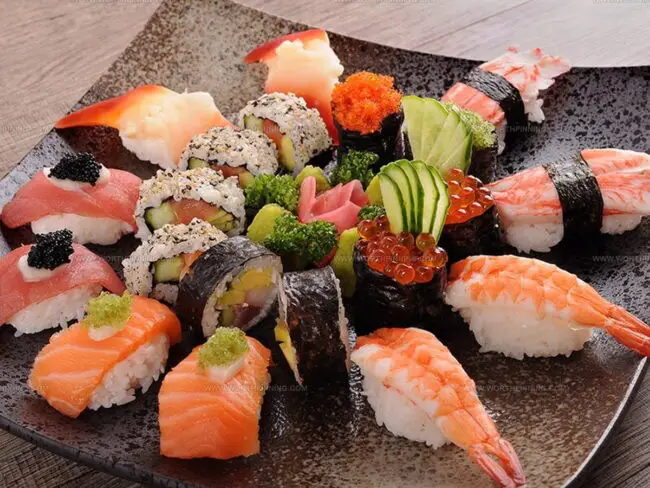
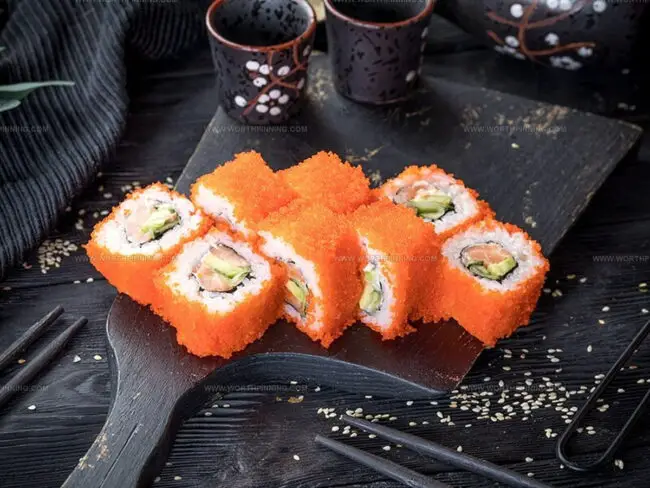

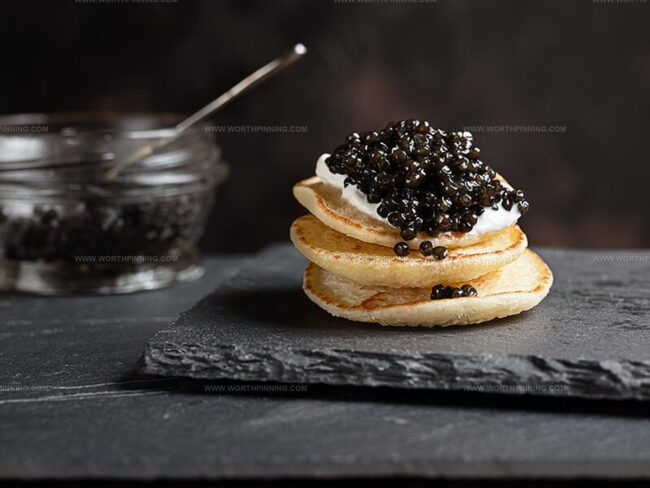
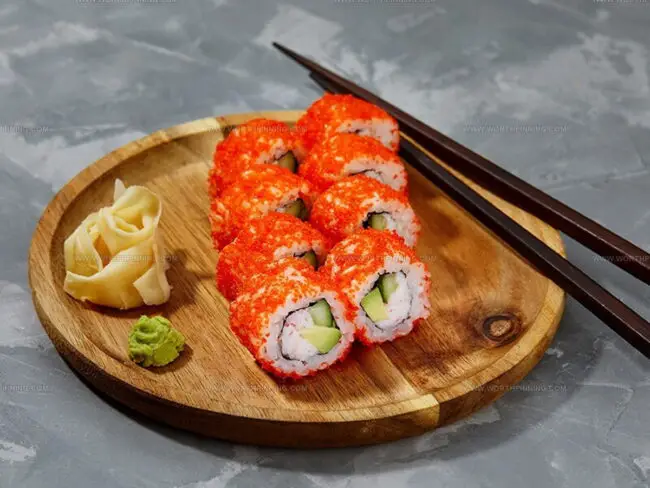
Sophia Rivera
Recipe Developer & Kitchen Tips Specialist
Expertise
Education
Austin Community College
San Antonio Culinary Institute
Sophia’s passion for baking began in her family kitchen, where she spent hours experimenting with new recipes. With a background in baking and pastry arts, she loves making desserts that are as visually stunning as they are delicious.
Sophia is all about using seasonal, locally sourced ingredients to create treats that everyone will enjoy. When she’s not creating mouth-watering desserts, you can find her gardening, making new recipes, or enjoying a relaxing afternoon with her family.